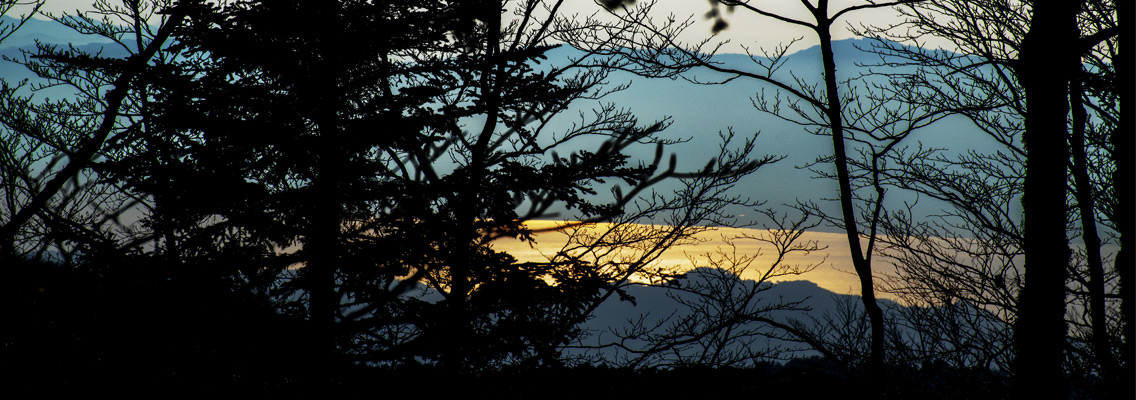Landscape and Myth Aspromonte National Park
Located between the Ionian Sea and the Tyrrhenian Sea, the Aspromonte National Park lies entirely in the province of Reggio Calabria and it takes its name from the homonymous mountain system that constitutes the last extremity of the southern Apennines.
In Aspromonte, nature blends with ancient history and culture still speaks in the ancient language of the Greeks that lived in Calabria. The word "Aspromonte" means "white mountain" and it dates back to the Greek populations of the Ionian coast who admired the white mountains of the massif.
The Aspromonte National Park was established by a law of 1989 and it was formalized by the Quadro Law concerning the Protected Areas. It was concretely realized in January 1994.
The territory of the Aspromonte Park covers an area of 65647,46 hectares and it includes 37 towns: Africo, Antonimina, Bagaladi, Bova, Bruzzano Zeffirio, Canolo, Cardeto, Careri, Ciminà, Cinquefrondi, Cittanova, Condofuri, Cosoleto, Delianuova, Gerace, Mammola, Molochio, Oppido Mamertina, Palizzi, Platì, Reggio Calabria, Roccaforte del Greco, Roghudi, Samo, Sant'Agata del Bianco, Santa Cristina d'Aspromonte, Sant'Eufemia d'Aspromonte, San Giorgio Morgeto, San Lorenzo, San Luca, San Roberto, Santo Stefano in Aspromonte, Scido, Scilla, Sinopoli, Staiti, Varapodio.
If you see entirely Aspromonte, it looks like a rocky pyramid that climbs down to the coast with soft river valleys that turn up into wide pebble Fiumaras, with streams and waterfalls that flow into it. At the centre of the rocky pyramid, you can see the highest peak, the "Montalto" or "Monte Cocuzzo" (1956 meters). Around the "Montalto", you find the "Monte Basilicò", the "Monte Cannavi", the "Monte Scorda" and the "Monte Antenna". The peaks are characterized by a very varied geology, with a skeleton formed by granitic-crystalline rocks and particularly by predominantly metamorphic units of the Cretaceous-Paleogenic age.
Another important component of the Aspromonte geological landscape are the so-called "Stones": large rocky boulders, shaped by atmospheric agents, which constitute natural monuments of great impact. Famous is the "Valle delle Grandi Pietre", near San Luca.
The great geological and morphological variety makes the vegetation equally varied.
The most representative element of the Park is certainly the forest, which covers about 50% of the protected area.
On the Tyrrhenian side there are Mesophilous Deciduous trees, in particular chestnuts trees and beeches trees; below 1400 meters of altitude there are mixed formations of beech trees and Pinus Nigra Laricio, and at higher altitudes you will find the beech trees and the long-lived and majestic white fir.
On the Ionian side, because of the aridity of the climate, thermophilic formations such as the downy oak and the farnetto are found. Typical of the undergrowth are the beech-wood tree bellflower, the eastern donorico, the cyclamen, the holly and the false nettle.
Near the Fiumaras are also found oleanders, tamarisks, black poplars, goats and black alders.
As the variety of environments and the richness of vegetation, fauna is very abundant too. Among the mammals there are the wolf, the wild boar, the wild cat, the marten, the badger, the fox, the beech marten, the weasel, the otter, the dormouse and the black squirrel (at the end of 2011, 75 specimens of roe deer were bring back in the Park, the specie was absent from the territory for about a century). Among the amphibians and reptiles, a particular importance is given to the salamandrina terdigitata, the salamandra maculosa, the tree frog, the grass snake natrix, the common viper, the podarcis muralis lizard, the hemidactylus, the three-toed skink, the green lizard and the blindworm. Inside the park you can also find raptors of high naturalistic value such as the golden eagle, the sparrow hawk, the tawny owl and the owl.
Some towns in the Protected Area are on the coastline, such as Scilla. It is a magical land known thanks to the tales of Homer and thanks to the surfaced and submerged wonders; from the sea bottoms, populated by fish species of considerable interest, to the steep cliffs that become ideal habitat for different species of birds: it makes Scilla “Important Bird Area” and it is also included in the Natura 2000 network.
The Aspromonte National Park is a heritage of inestimable historical, cultural and naturalistic value made up of paths, waterfalls, legends and folk festivals to discover. A journey through time, in nature and traditions, straight to the heart of a Calabria that wants to tell its story through its woods and its abandoned villages, guided by the pen of Corrado Alvaro, who has masterfully been able to tell the ancient and wild charm.

The stages are:Monument dedicated to Nino MartinoNino Martino Ski SlopeAbetazzoTremusa CavernsSea bottoms
Monument dedicated to Nino Martino
Abetazzo
Sea bottoms
Nino Martino Ski Slope
Tremusa Caverns
Landscape and Myth Naturalistic virtual tour of Scilla
The digital tour is accessible for the visitors of the Ruffo Castle in Scilla, where a special area is dedicated to the viewing of videos through a touch screen and by consulting a website dedicated to the project: www.paesaggioemito.it.







